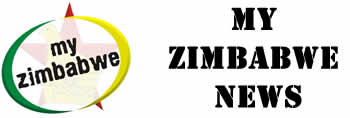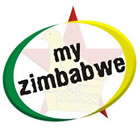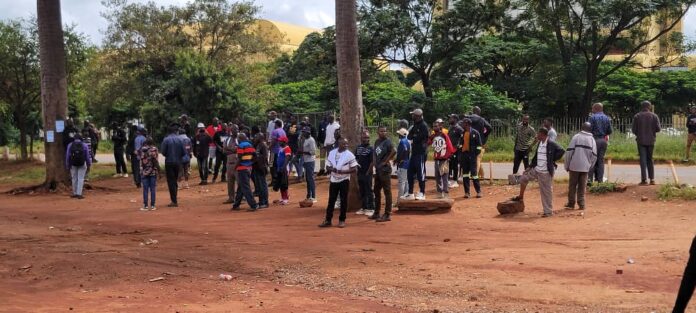Harare – What began as a call for demonstrations by war veteran and former Zanu PF central committee member Blessed Geza transformed into a nationwide shutdown yesterday, as businesses closed, streets emptied, and learners stayed home in all of Zimbabwe’s major cities. While the government downplayed the impact, opposition figures and analysts hailed the protest as a success, demonstrating widespread discontent with the current administration.
The protest, initially intended to be a series of demonstrations, saw minimal activity in Harare, Bulawayo, Mutare, Gweru, Masvingo, and Chinhoyi. However, the heavy police presence across these cities indicated the tense atmosphere and the government’s determination to suppress any signs of unrest.
“They attacked us for just standing there. This government fears its people,” said one protester, who spoke on condition of anonymity, highlighting the perceived heavy-handedness of the authorities.
Despite the limited number of actual demonstrations, the shutdown’s impact was most visible in the eerie quiet that engulfed the usually bustling urban centres. Most shops, markets, and vending stalls were closed, while public transport stayed off the roads, fearing violence.
In Bulawayo, the central business district was a ghost town, where only a few brave informal traders ventured out. Schools across the country recorded alarmingly low attendance, with parents keeping children at home due to safety concerns. A survey undertaken by NewsDay revealed that there was no public transport save for a few kombis that had increased their fares from R10 to US$1 for a single trip into the city.
Some of the business operators in Emganwini high-density suburb indicated that they fear losing their goods to looters. “The situation is tricky; we fear vandalism and looting, most of the people at home, no children went to school. We cannot risk our business as well,” said one of the operators, illustrating the difficult choices faced by business owners.
In Mutare and Gweru, some pupils who showed up were turned away since teachers failed to report for duty. Some schools in Harare were forced to cancel examinations because of a low turnout after parents resolved not to risk the safety of their children. “I didn’t want to take chances. We’ve seen how protests turn violent,” said a Harare mother, Emily, whose two children stayed home.
Despite the clear disruption, government officials dismissed the shutdown as insignificant. Police claimed the situation was “normal” and blamed “a few rogue elements” for the unrest.
“The police warn social media sites against the circulation of old videos to cause alarm and despondency in the country.”
However, opposition figures and civil society groups declared the protest a success, arguing that the deserted streets sent a strong message to authorities.
Adding to the day’s events, tens of disgruntled citizens took to the streets, protesting against President Emmerson Mnangagwa’s government, after what had started as an unusually quiet day in the capital. The demonstrators converged at Robert Mugabe Square, also known as Freedom Square, around 1030 hours heeding to calls by expelled Zanu PF Central Committee member and war veteran Blessed Geza, demanding Mnangagwa’s immediate resignation.
Despite police efforts to clear Freedom Square, the protesters repeatedly reappeared in groups, sometimes circling the perimeter fence of the Harare Magistrates Court. Police fired tear gas in an attempt to disperse the crowds, but to no avail. The protesters barricaded the intersection of Rotten Row and Robert Mugabe streets with stones, rendering it impassable for motorists.
Demonstrators were audibly heard chanting “Tipeiwo Commander” (Give us the Commander) and “2030 taramba” (We reject 2030), alternating between the two slogans. New Zimbabwe spoke to a couple of protesters who explained that “tipeiwo commander” referred to Vice President Constantino Chiwenga. “This is the time for Chiwenga to take over. He has worked many years as a disciplined soldier. Mnangagwa must respect Chiwenga,” said a demonstrator identified as Frank, revealing a potential power struggle within the ruling party.
While the police issued a statement dismissing images and visuals of protesters as lacking credibility, this denial fell flat, as various media platforms widely shared the latest updates from the Harare protests. The news crew also observed that police arrested scores of people, but some were subsequently released and could be seen rejoining the demonstration. This could suggest that some protesters have questionable motives, or that the police are exercising a degree of leniency – a marked contrast to their previous and traditional treatment of opposition protesters. However, some were arrested and taken to Harare Central Police Station.
With tensions still simmering, political analyst Ibbo Mandaza said the massive success of the stay away was a message to the government. “The massive stay away is a massive political statement by the masses of Zimbabwe. Those in power have reason to fear and likewise the leaders of the opposition who are now left behind, having failed and even abused the high expectations of Zimbabweans ready for change yesterday,” he said.
Political analyst Eldred Masunungure said while the organisers had erred in calling on Zimbabweans to confront a “vicious” government prepared to thwart demonstrations, the “fact that people did not heed the government call to continue with their daily activities was also a win for the organisers”.
“It also remains clear that Zimbabweans are not ready to engage or confront the government forces like they used to do in 2000. It was also clear that there was no ultimate winner because the people stayed home while the stay away was also a statement from the ordinary people,” Masunungure said.












